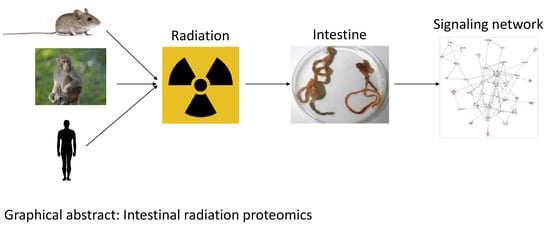Radiation-Induced Intestinal Normal Tissue Toxicity: Implications for Altered Proteome Profile
Abstract
1. Introduction
2. Proteomics Methods Used to Separate Proteins
2.1. Gel-Based Proteomics Method
2.2. Mass Spectrometry-Based Proteomics
3. Radiation-Induced Change in Protein Profile in Intestinal Cells or Tissues
3.1. Radiation Alters Protein Profiles in Intestinal Cells in Culture
3.2. Radiation Alters Protein Profile in the Intestinal Tissue of Rodents
3.3. Radiation Alters Protein Profile in the Intestinal Tissue of Nonhuman Primates
4. Therapeutic Radiation Alters the Plasma Protein Profile of Rectal Cancer Patients
5. Signaling Pathways Altered as a Result of Intestinal Radiation Toxicity
6. Discussion
Author Contributions
Funding
Institutional Review Board Statement
Informed Consent Statement
Data Availability Statement
Acknowledgments
Conflicts of Interest
References
- Hauer-Jensen, M.; Denham, J.W.; Andreyev, H.J.N. Radiation enteropathy-pathogenesis, treatment and prevention. Nat. Rev. Gastroenterol. Hepatol. 2014, 11, 470–479. [Google Scholar] [CrossRef] [PubMed]
- Kuku, S.; Fragkos, C.; McCormack, M.; Forbes, A. Radiation-induced bowel injury: The impact of radiotherapy on survivorship after treatment for gynaecological cancers. Br. J. Cancer 2013, 109, 1504–1512. [Google Scholar] [CrossRef] [PubMed]
- Stacey, R.; Green, J.T. Radiation-induced small bowel disease: Latest developments and clinical guidance. Ther. Adv. Chronic Dis. 2014, 5, 15–29. [Google Scholar] [CrossRef] [PubMed]
- Hauer-Jensen, M. Late radiation injury of the small intestine. Clinical, pathophysiologic and radiobiologic aspects: A Review. Acta Oncol. 1990, 29, 401–415. [Google Scholar] [CrossRef]
- Andreyev, H.J.N. Gastrointestinal problems after pelvic radiotherapy: The past, the present and the future. Clin. Oncol. 2007, 19, 790–799. [Google Scholar] [CrossRef]
- Hauer-Jensen, M.; Wang, J.; Boerma, M.; Fu, Q.; Denham, J.W. Radiation damage to the gastrointestinal tract: Mechanisms, diagnosis, and management. Curr. Opin. Support. Palliat. Care 2007, 1, 23–29. [Google Scholar] [CrossRef]
- Shadad, A.K.; Sullivan, F.J.; Martin, J.D.; Egan, L.J. Gastrointestinal radiation injury: Symptoms, risk factors and mechanisms. World J. Gastroenterol. 2013, 19, 185–198. [Google Scholar] [CrossRef]
- O’Farrell, P.H. High resolution two-dimensional electrophoresis of proteins. J. Biol. Chem. 1975, 250, 4007–4021. [Google Scholar] [CrossRef]
- Lopez, M.F. Proteome analysis. I. Gene products are where the biological action is. J. Chromatogr. B Biomed. Sci. Appl. 1999, 722, 191–202. [Google Scholar] [CrossRef]
- Cristea, I.M.; Gaskell, S.J.; Whetton, A.D. Proteomics techniques and their application to hematology. Blood 2004, 103, 3624–3634. [Google Scholar] [CrossRef]
- Li, X.; Wang, W.; Chen, J. Recent progress in mass spectrometry proteomics for biomedical research. Sci. China Life Sci. 2017, 60, 1093–1113. [Google Scholar] [CrossRef] [PubMed]
- Hutchens, T.W.; Nelson, R.W.; Li, C.M.; Yip, T.T. Synthetic metal-binding protein surface domains for metal ion-dependent interaction chromatography. I. Analysis of bound metal ions by matrix-assisted UV laser desorption time-of-flight mass spectrometry. J. Chromatogr. 1992, 604, 125–132. [Google Scholar] [CrossRef]
- Murray, K.K.; Russell, D.H. Aerosol matrix-assisted laser desorption ionization mass spectrometry. J. Am. Soc. Mass Spectrom. 1994, 5, 1–9. [Google Scholar] [CrossRef]
- Wu, K.J.; Shaler, T.A.; Becker, C.H. Time-of-flight mass spectrometry of underivatized single-stranded DNA oligomers by matrix-assisted laser desorption. Anal. Chem. 1994, 66, 1637–1645. [Google Scholar] [CrossRef]
- Aebersold, R.; Mann, M. Mass spectrometry-based proteomics. Nature 2003, 422, 198–207. [Google Scholar] [CrossRef] [PubMed]
- Aebersold, R.; Mann, M. Mass-spectrometric exploration of proteome structure and function. Nature 2016, 537, 347–355. [Google Scholar] [CrossRef]
- Mann, M.; Kulak, N.A.; Nagaraj, N.; Cox, J. The coming age of complete, accurate, and ubiquitous proteomes. Mol. Cell 2013, 49, 583–590. [Google Scholar] [CrossRef]
- Wolters, D.A.; Washburn, M.P.; Yates, J.R. An automated multidimensional protein identification technology for shotgun proteomics. Anal. Chem. 2001, 73, 5683–5690. [Google Scholar] [CrossRef]
- Ong, S.-E.; Blagoev, B.; Kratchmarova, I.; Kristensen, D.B.; Steen, H.; Pandey, A.; Mann, M. Stable isotope labeling by amino acids in cell culture, SILAC, as a simple and accurate approach to expression proteomics. Mol. Cell. Proteom. 2002, 1, 376–386. [Google Scholar] [CrossRef]
- Dayon, L.; Hainard, A.; Licker, V.; Turck, N.; Kuhn, K.; Hochstrasser, D.F.; Burkhard, P.R.; Sanchez, J.-C. Relative quantification of proteins in human cerebrospinal fluids by MS/MS using 6-plex isobaric tags. Anal. Chem. 2008, 80, 2921–2931. [Google Scholar] [CrossRef]
- Thompson, A.; Schäfer, J.; Kuhn, K.; Kienle, S.; Schwarz, J.; Schmidt, G.; Neumann, T.; Johnstone, R.; Mohammed, A.K.A.; Hamon, C. Tandem mass tags: A novel quantification strategy for comparative analysis of complex protein mixtures by MS/MS. Anal. Chem. 2003, 75, 1895–1904. [Google Scholar] [CrossRef] [PubMed]
- Ross, P.L.; Huang, Y.N.; Marchese, J.N.; Williamson, B.; Parker, K.; Hattan, S.; Khainovski, N.; Pillai, S.; Dey, S.; Daniels, S.; et al. Multiplexed protein quantitation in Saccharomyces cerevisiae using amine-reactive isobaric tagging reagents. Mol. Cell. Proteom. 2004, 3, 1154–1169. [Google Scholar] [CrossRef] [PubMed]
- Deeb, S.J.; D’Souza, R.C.J.; Cox, J.; Schmidt-Supprian, M.; Mann, M. Super-SILAC allows classification of diffuse large B-cell lymphoma subtypes by their protein expression profiles. Mol. Cell. Proteom. 2012, 11, 77–89. [Google Scholar] [CrossRef] [PubMed]
- Geiger, T.; Cox, J.; Ostasiewicz, P.; Wisniewski, J.R.; Mann, M. Super-SILAC mix for quantitative proteomics of human tumor tissue. Nat. Methods 2010, 7, 383–385. [Google Scholar] [CrossRef]
- Geiger, T.; Wisniewski, J.R.; Cox, J.; Zanivan, S.; Kruger, M.; Ishihama, Y.; Mann, M. Use of stable isotope labeling by amino acids in cell culture as a spike-in standard in quantitative proteomics. Nat. Protoc. 2011, 6, 147–157. [Google Scholar] [CrossRef] [PubMed]
- Choe, L.; D’Ascenzo, M.; Relkin, N.R.; Pappin, D.; Ross, P.; Williamson, B.; Guertin, S.; Pribil, P.; Lee, K.H. 8-plex quantitation of changes in cerebrospinal fluid protein expression in subjects undergoing intravenous immunoglobulin treatment for Alzheimer’s disease. Proteomics 2007, 7, 3651–3660. [Google Scholar] [CrossRef] [PubMed]
- Everley, R.A.; Kunz, R.C.; McAllister, F.E.; Gygi, S.P. Increasing throughput in targeted proteomics assays: 54-plex quantitation in a single mass spectrometry run. Anal. Chem. 2013, 85, 5340–5346. [Google Scholar] [CrossRef]
- Murphy, J.P.; Everley, R.A.; Coloff, J.L.; Gygi, S.P. Combining amine metabolomics and quantitative proteomics of cancer cells using derivatization with isobaric tags. Anal. Chem. 2014, 86, 3585–3593. [Google Scholar] [CrossRef]
- Altelaar, A.F.M.; Frese, C.K.; Preisinger, C.; Hennrich, M.L.; Schram, A.W.; Timmers, H.T.M.; Heck, A.J.R.; Mohammed, S. Benchmarking stable isotope labeling based quantitative proteomics. J. Proteom. 2013, 88, 14–26. [Google Scholar] [CrossRef]
- Bartke, T.; Borgel, J.; DiMaggio, P.A. Proteomics in epigenetics: New perspectives for cancer research. Brief Funct. Genom. 2013, 12, 205–218. [Google Scholar] [CrossRef]
- Bo, Z.; Yongping, S.; Fengchao, W.; Guoping, A.; Yongjiang, W. Identification of differentially expressed proteins of gamma-ray irradiated rat intestinal epithelial IEC-6 cells by two-dimensional gel electrophoresis and matrix-assisted laser desorption/ionisation-time of flight mass spectrometry. Proteomics 2005, 5, 426–432. [Google Scholar] [CrossRef] [PubMed]
- Bajaj, S.; Alam, S.I.; Ahmad, B.; Farooqi, H.; Gupta, M.L. Combination of podophyllotoxin and rutin modulate radiation-induced alterations of jejunal proteome in mice. Int. J. Radiat. Biol. 2020, 96, 879–893. [Google Scholar] [CrossRef]
- Zhang, B.; Su, Y.-P.; Ai, G.-P.; Liu, X.-H.; Wang, F.-C.; Cheng, T.-M. Differentially expressed proteins of gamma-ray irradiated mouse intestinal epithelial cells by two-dimensional electrophoresis and MALDI-TOF mass spectrometry. World J. Gastroenterol. 2003, 9, 2726–2731. [Google Scholar] [CrossRef] [PubMed]
- Lim, Y.-B.; Pyun, B.-J.; Lee, H.-J.; Jeon, S.-R.; Jin, Y.B.; Lee, Y.-S. Proteomic identification of radiation response markers in mouse intestine and brain. Proteomics 2011, 11, 1254–1263. [Google Scholar] [CrossRef] [PubMed]
- Rosen, E.; Fatanmi, O.O.; Wise, S.Y.; Rao, V.A.; Singh, V.K. Tocol Prophylaxis for Total-body Irradiation: A Proteomic Analysis in Murine Model. Health Phys. 2020, 119, 12–20. [Google Scholar] [CrossRef] [PubMed]
- Huang, W.; Yu, J.; Jones, J.W.; Carter, C.L.; Pierzchalski, K.; Tudor, G.; Booth, C.; MacVittie, T.J.; Kane, M.A. Proteomic Evaluation of the Acute Radiation Syndrome of the Gastrointestinal Tract in a Murine Total-body Irradiation Model. Health Phys. 2019, 116, 516–528. [Google Scholar] [CrossRef]
- Han, Y.-M.; Park, J.-M.; Choi, Y.S.; Jin, H.; Lee, Y.-S.; Han, N.-Y.; Lee, H.; Hahm, K.B. The efficacy of human placenta-derived mesenchymal stem cells on radiation enteropathy along with proteomic biomarkers predicting a favorable response. Stem Cell Res. Ther. 2017, 8, 105. [Google Scholar] [CrossRef]
- Wang, Q.; Wang, Y.; Du, L.; Xu, C.; Liu, Y.; Liu, Q.; Fan, S. Quantitative proteomic analysis of the effects of melatonin treatment for mice suffered from small intestinal damage induced by γ-ray radiation. Int. J. Radiat. Biol. 2021, 97, 1206–1216. [Google Scholar] [CrossRef]
- Song, S.; Chen, D.; Ma, T.; Luo, Y.; Yang, Z.; Wang, D.; Fan, X.; Qin, Q.; Ni, B.; Guo, X.; et al. Molecular mechanism of acute radiation enteritis revealed using proteomics and biological signaling network analysis in rats. Dig. Dis. Sci. 2014, 59, 2704–2713. [Google Scholar] [CrossRef]
- Huang, S.; Wang, X.; Sun, Y.; Lu, X.; Jiang, W.; Chen, Z.; Huang, Y.; Chi, P. TMT-labelled quantitative proteomic analysis to identify the proteins underlying radiation-induced colorectal fibrosis in rats. J. Proteom. 2020, 223, 103801. [Google Scholar] [CrossRef]
- Huang, W.; Yu, J.; Liu, T.; Tudor, G.; Defnet, A.E.; Zalesak, S.; Kumar, P.; Booth, C.; Farese, A.M.; MacVittie, T.J.; et al. Proteomic Evaluation of the Natural History of the Acute Radiation Syndrome of the Gastrointestinal Tract in a Non-human Primate Model of Partial-body Irradiation with Minimal Bone Marrow Sparing Includes Dysregulation of the Retinoid Pathway. Health Phys. 2020, 119, 604–620. [Google Scholar] [CrossRef] [PubMed]
- Holm, M.; Joenväärä, S.; Saraswat, M.; Tohmola, T.; Ristimäki, A.; Renkonen, R.; Haglund, C. Preoperative Radiotherapy Leads to Significant Differences in the Plasma Protein Profile of Rectal Cancer Patients. Oncology 2020, 98, 493–500. [Google Scholar] [CrossRef] [PubMed]
- Huang, W.; Yu, J.; Liu, T.; Defnet, A.E.; Zalesak, S.; Farese, A.M.; MacVittie, T.J.; Kane, M.A. Proteomics of Non-human Primate Plasma after Partial-body Radiation with Minimal Bone Marrow Sparing. Health Phys. 2020, 119, 621–632. [Google Scholar] [CrossRef] [PubMed]
- Vorotnikova, E.; Tries, M.; Braunhut, S. Retinoids and TIMP1 prevent radiation-induced apoptosis of capillary endothelial cells. Radiat. Res. 2004, 161, 174–184. [Google Scholar] [CrossRef] [PubMed]
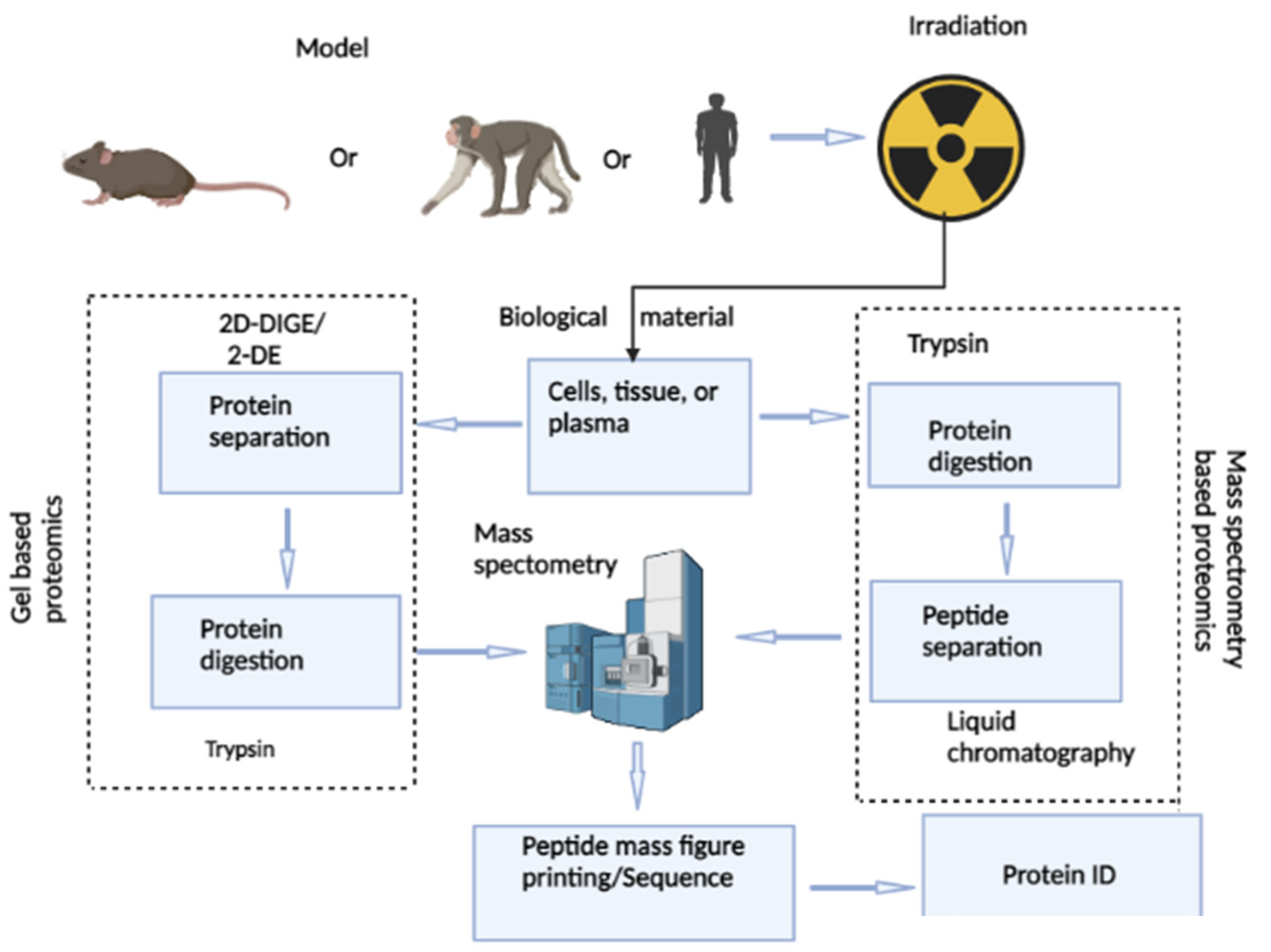
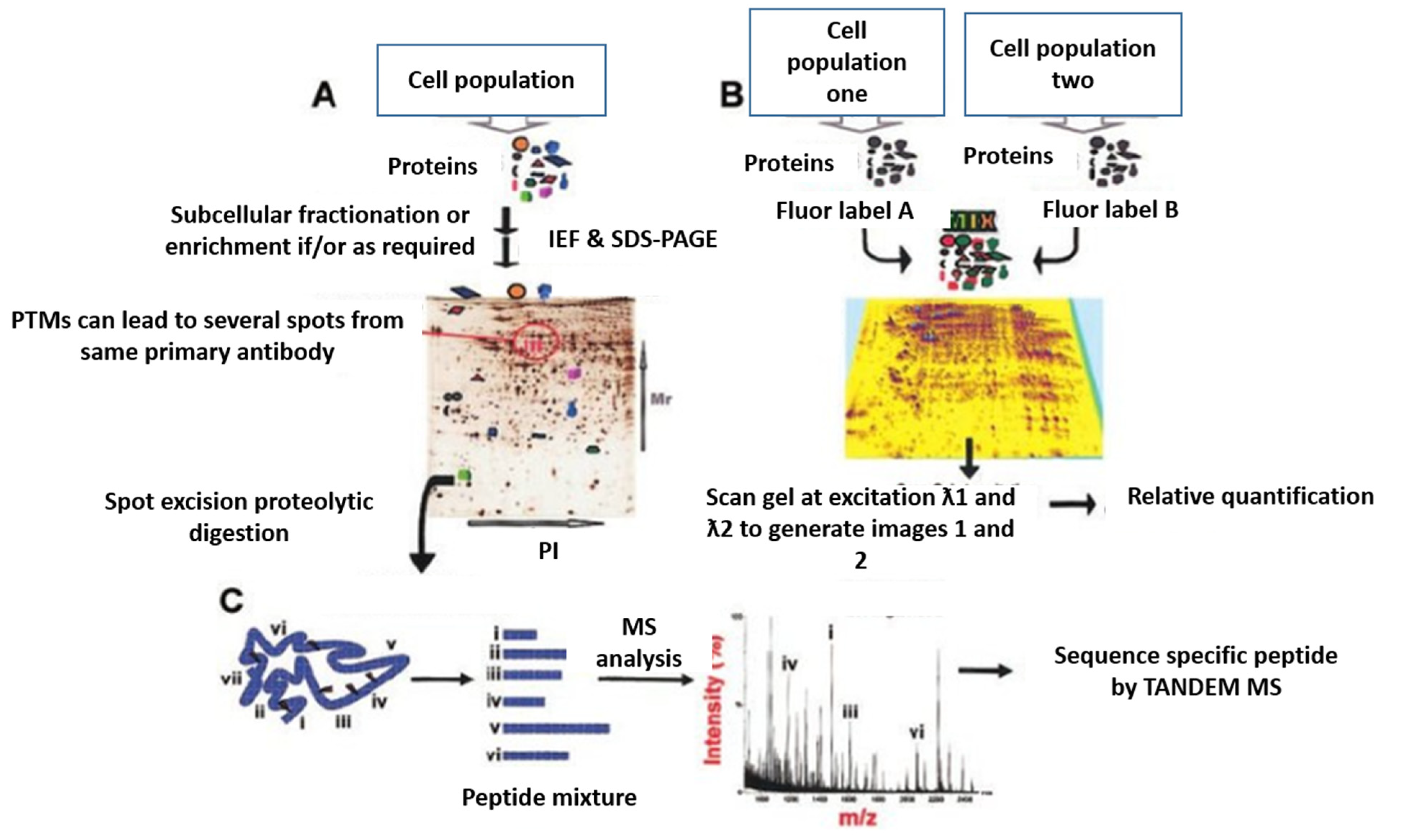
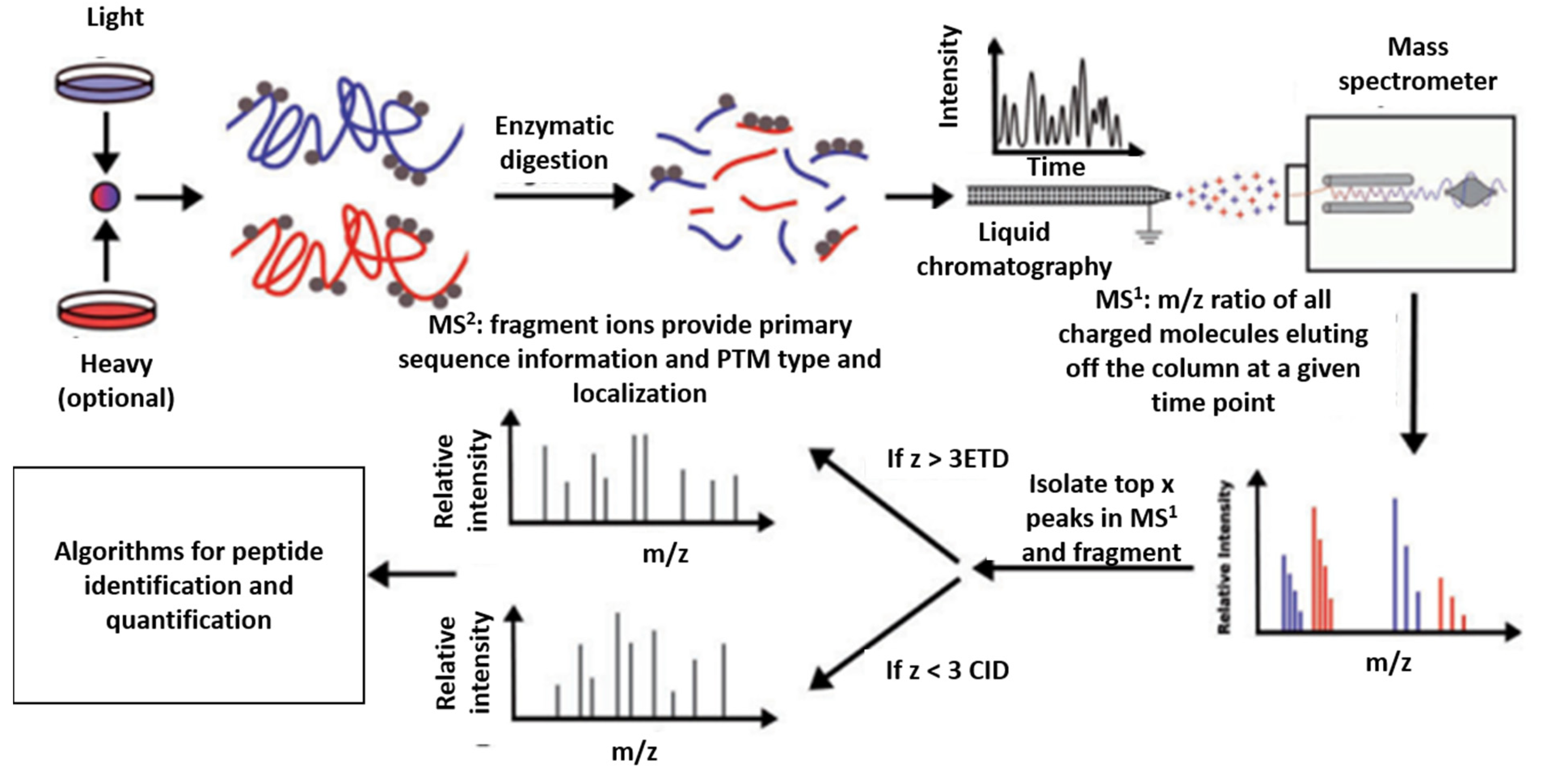
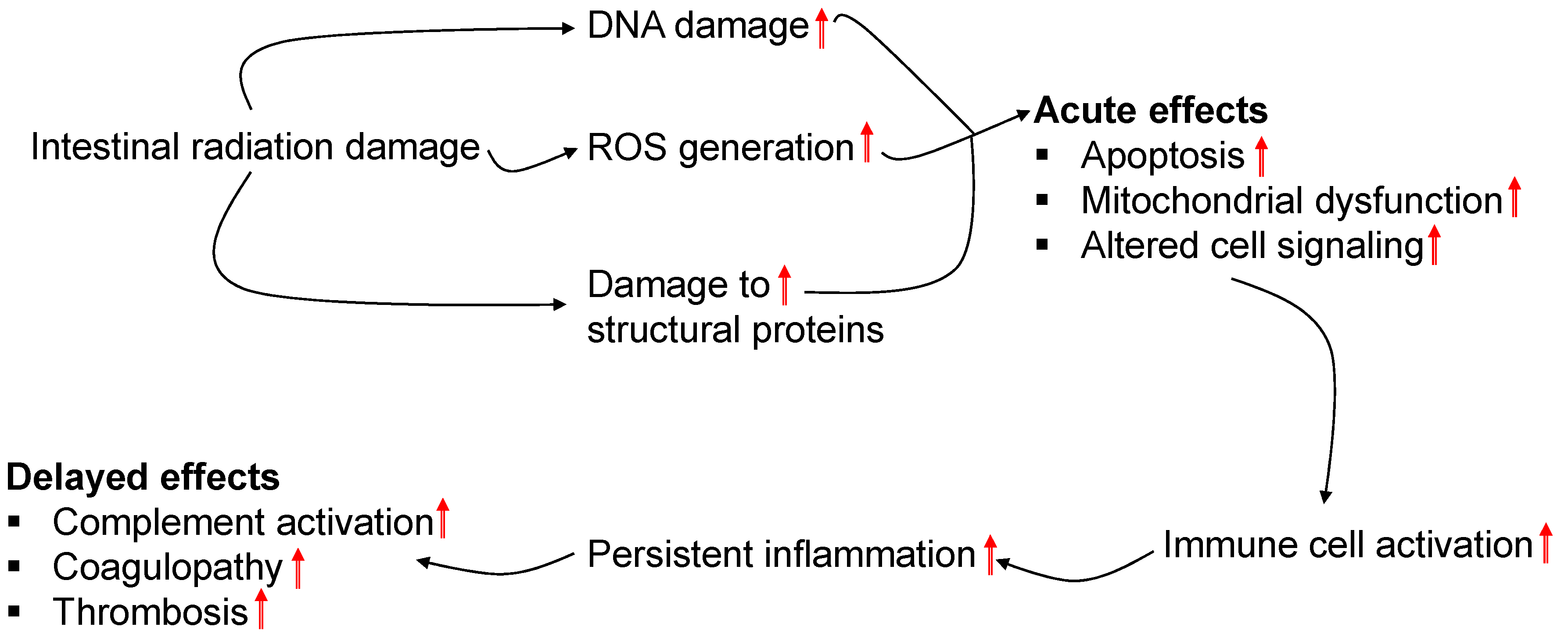
| Strain | Sex | Age | Tissue Type | Radiation Dose (Gy) | Tissue Harvest Time | Mode of Radiation | Radiation Type | Radiation-Responsive Proteins | Ref. |
|---|---|---|---|---|---|---|---|---|---|
| C57BL/6 mice | Male | 6–8 weeks | Jejunum | 9 | 1 h | TBI | γ-rays | ATP synthase subunit D, aldehyde dehydrogenase, Cox 5a, CRP, multifaceted C1qbp, Oat, Pcna | [32] |
| Bal b/c mice | Male | 58–62 days | Intestinal epithelia | 9 | 3 and 72 h | TBI | γ-rays | Enolase and peroxiredoxin | [33] |
| C57BL/6 mice | Female | 7 weeks | 1 | 24 h | TBI | γ-rays | Phosphoglycerate kinase 1 | [34] | |
| CD2F1 mice | Male | 6–8 weeks | Jejunum | 11 | 24 h | TBI | γ-rays | Cytoplasmic actin 2, dihydropyrimidinaserelated protein 2, ezrin, elongation factor 2, plastin-1, and peroxiredoxin-1 | [35] |
| C57BL/6J mice | Male | 8–10 weeks | Ileum | 8, 10, 12 and 14 | 1, 3, and 6 days | TBI | X-rays | Ctsc, Cen pv, amy2, DUOX2, Try4, Fabp1, Dsp | [36] |
| C57BL/6J mice | Female | 6 weeks | Small intestines | 7 | 10 days | TBI | γ-rays | IL-10, glycoprotein, TIMP-1, and antioxidant protein, GST mu type 1 | [37] |
| C57BL/6J mice | Male | 6–8 weeks | Small intestines | 13 | 3 days | ABI | γ-rays | Gpx3, Sod3 | [38] |
| Sprague–Dawley rats | Male | Adult | Ileum | 10 | 4 days | ABI | γ-rays | Gelsolin, Prelamin-A/C, Lamin-B1, fructose-bisphosphatealdolase A and α-enolase | [39] |
| Sprague–Dawley rats | Male | 6 weeks | Large intestine | 20 | 10 weeks | ABI | X-rays | FGG, THBS1, AGT, F2, C3, ITGAM, ITGB2, CYBB, QSOX1 | [40] |
| Strain | Age | Tissue Type | Radiation Dose (Gy) | Post-Irradiation Interval | Mode of Radiation | Radiation Types | Radiation-Impacted Pathways | Ref. |
|---|---|---|---|---|---|---|---|---|
| C57BL/6 mice | 6–8 weeks | Jejunum | 9 | 1 h | TBI | γ-rays | Proteasome and protein processing in the endoplasmic reticulum | [32] |
| CD2F1 mice | 6–8 weeks | Jejunum | 11 | 24 h | TBI | γ-rays | Rho family GTPases Signaling, glycolysis I, xenobiotic metabolism, 14-3-3-mediated signaling, and retinol biosynthesis | [35] |
| C57BL/6J mice | 8–10 weeks | Ileum | 8, 10, 12 and 14 | 1, 3, and 6 days | TBI | X-rays | Protein kinase A, acute phase response, and LXR/RXR signaling | [36] |
| C57BL/6J mice | 6–8 weeks | Small intestines | 13 | 3 days | ABI | γ-rays | DNA damage and apoptosis signaling | [38] |
| Sprague–Dawley rats | Adult | Ileum | 10 | 4 days | ABI | γ-rays | FAS and glycolysis signaling pathway | [39] |
| Sprague–Dawley rats | 6 weeks | Large intestines | 20 | 10 weeks | ABI | X-rays | Complement and coagulation cascades, amoebiasis, phagosome, lysosome, focal adhesion, proteoglycans in cancer, and oxytocin signaling | [40] |
| Nonhuman primate (Macaca mulatta) | Adult | Jejunum | 12 | 4, 8/9, 11/12, 15, and 21/22 days | PBI | X-rays | GP6 Signaling Pathway, acute phase response signaling, LXR/RXR pathway, and intrinsic prothrombin activation pathway | [41] |
Publisher’s Note: MDPI stays neutral with regard to jurisdictional claims in published maps and institutional affiliations. |
© 2022 by the authors. Licensee MDPI, Basel, Switzerland. This article is an open access article distributed under the terms and conditions of the Creative Commons Attribution (CC BY) license (https://creativecommons.org/licenses/by/4.0/).
Share and Cite
Larrey, E.K.; Pathak, R. Radiation-Induced Intestinal Normal Tissue Toxicity: Implications for Altered Proteome Profile. Genes 2022, 13, 2006. https://doi.org/10.3390/genes13112006
Larrey EK, Pathak R. Radiation-Induced Intestinal Normal Tissue Toxicity: Implications for Altered Proteome Profile. Genes. 2022; 13(11):2006. https://doi.org/10.3390/genes13112006
Chicago/Turabian StyleLarrey, Enoch K., and Rupak Pathak. 2022. "Radiation-Induced Intestinal Normal Tissue Toxicity: Implications for Altered Proteome Profile" Genes 13, no. 11: 2006. https://doi.org/10.3390/genes13112006
APA StyleLarrey, E. K., & Pathak, R. (2022). Radiation-Induced Intestinal Normal Tissue Toxicity: Implications for Altered Proteome Profile. Genes, 13(11), 2006. https://doi.org/10.3390/genes13112006





